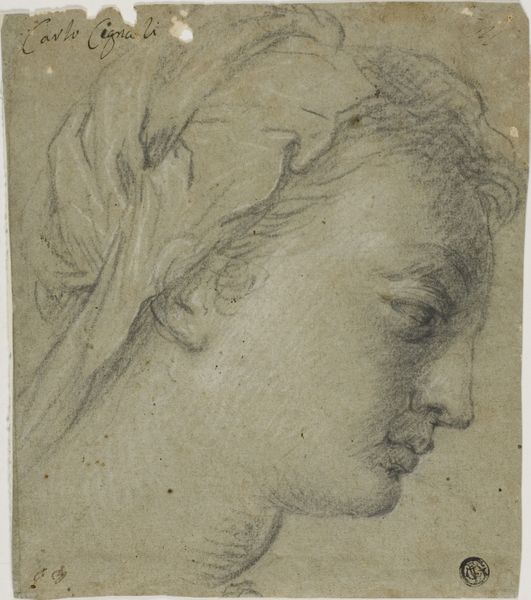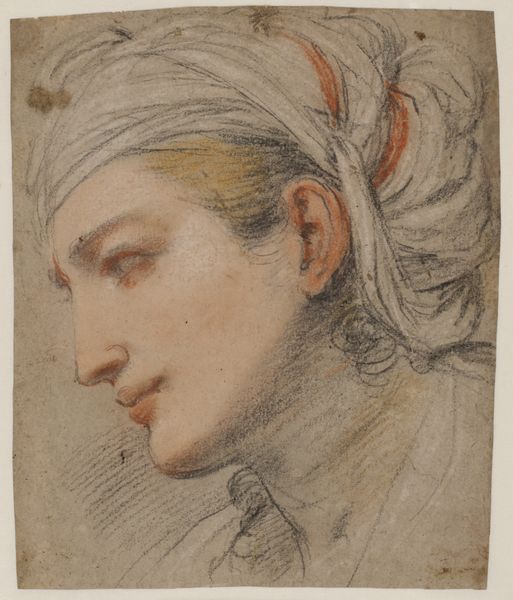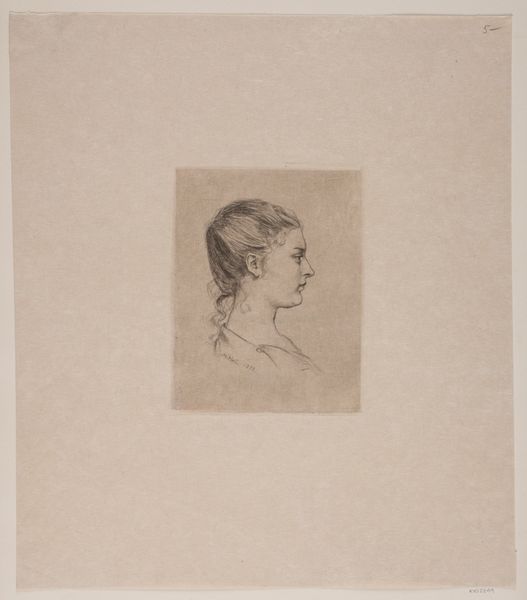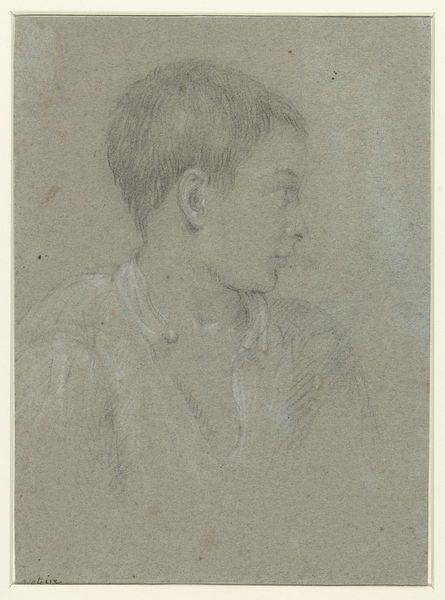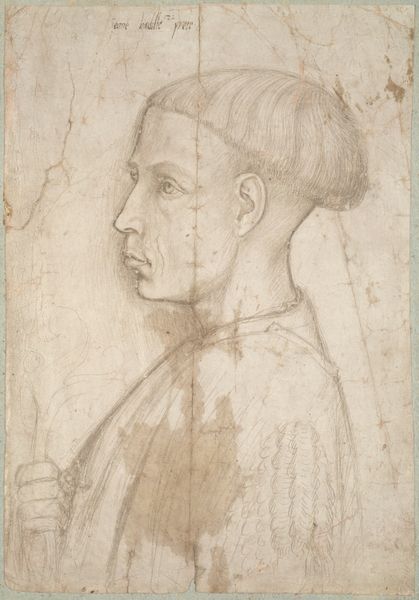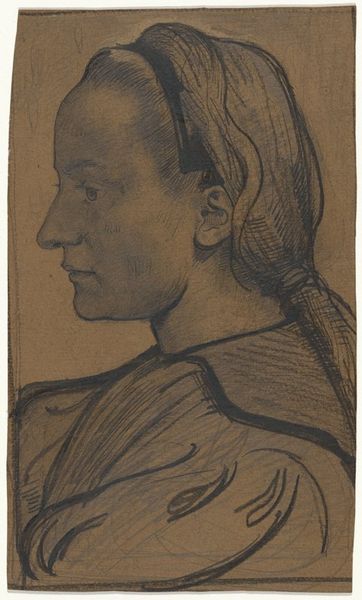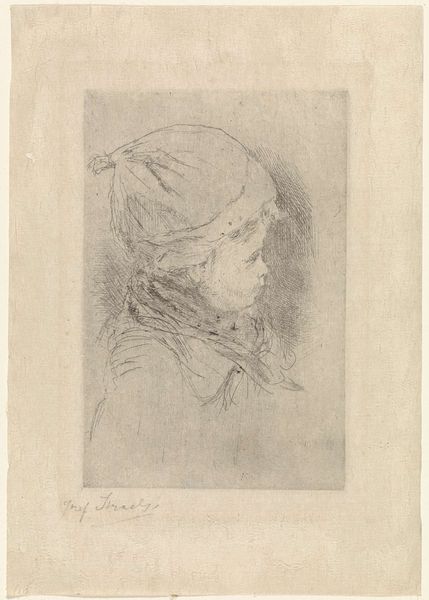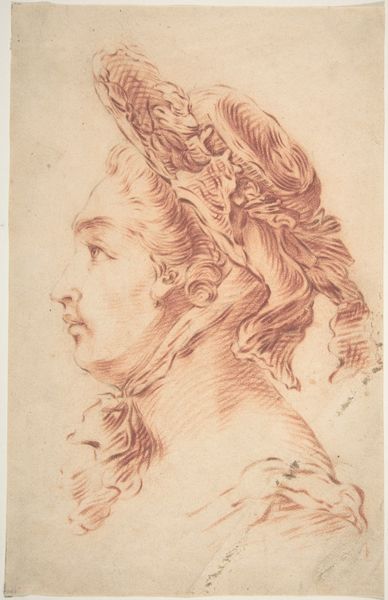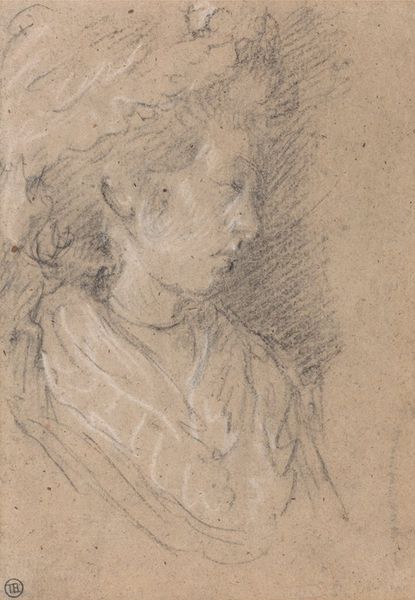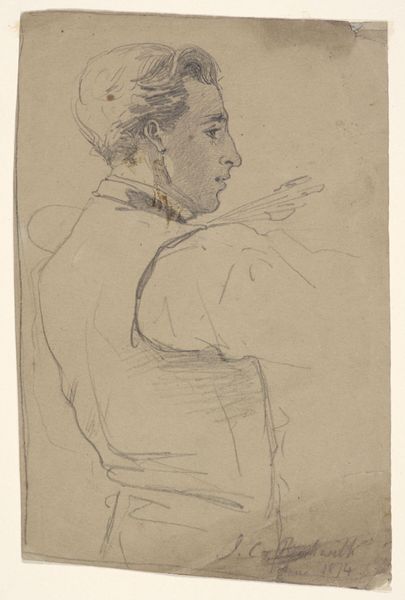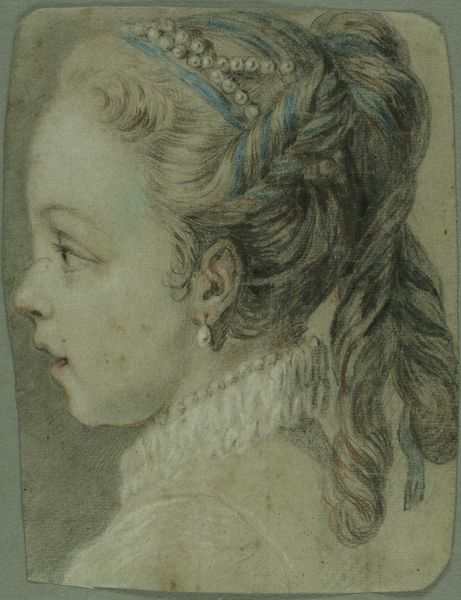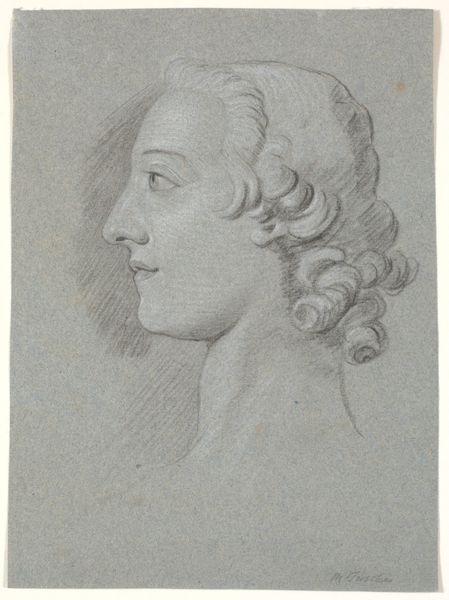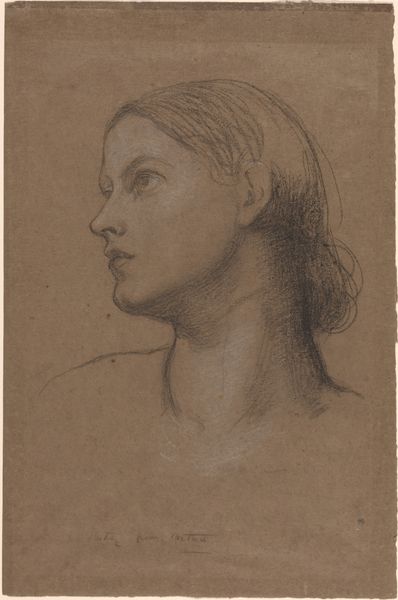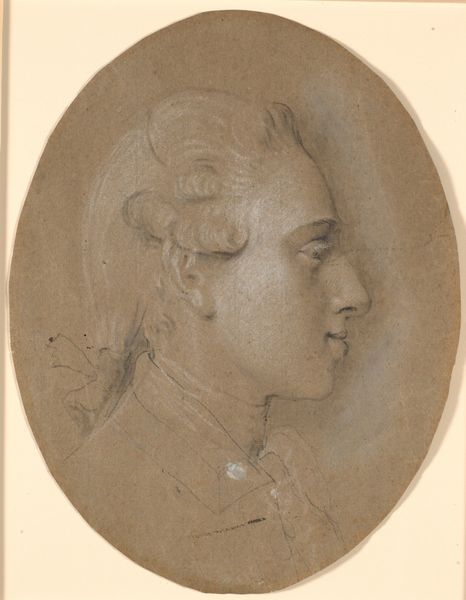
drawing, pencil
#
portrait
#
drawing
#
self-portrait
#
pencil sketch
#
charcoal drawing
#
figuration
#
11_renaissance
#
pencil
#
northern-renaissance
Dimensions: height 138 mm, width 99 mm
Copyright: Rijks Museum: Open Domain
Curator: Looking at this drawing by Giovanni Mannozzi, titled “Portret van een onbekende jonge vrouw”, made in the 1620s, I'm struck by its intimate and delicate rendering. What’s your initial take on it? Editor: It’s arresting—the sitter’s expression is reserved yet there's a quiet strength in her profile. The marks of pencil and charcoal are laid bare. The materiality lends it a sense of immediacy; like we're seeing it just as it came from the hand of the artist. Curator: Absolutely. It's tempting to frame this work through the lens of Renaissance ideals of female representation. The demure pose, for instance, might initially seem to reinforce traditional gender roles. But how does that sit with its technical aspects? Editor: Well, the visible hatching and the sketched-in forms disrupt any sense of idealized polish. It shows us the labour involved. It's like we're witnessing a moment of production, a conversation between the artist and the materials, not just a finished object for consumption. We should note that Mannozzi chose readily available and cheaper media instead of elaborate or costly options. Curator: Interesting thought! This makes me think of the access that women of the Renaissance may have had, not only to art and the art world, but more broadly to education and economic empowerment. Is she a woman of some social standing because of her dress, and did that afford her some agency? I think the social status plays a part here. Editor: Perhaps, and the use of what appears to be paper as a support could emphasize the portability and accessibility of art creation during this period. The lines were smudged during the making. Its modest scale too affects my thinking on access, making the materials all the more immediate to hand and less restrictive to process. Curator: Considering Mannozzi’s possible intention adds another layer. Could this be a reflection on identity itself, rendered through a controlled yet somewhat unfinished mode? Her gaze is direct, yet her identity remains “unknown,” and so, like the labor it underwent, so does her narrative, making us wonder if this a proto-feminist depiction? Editor: Perhaps. This piece then feels like less a formal portrait and more a testament to process, materiality and ultimately what survives of labour. Curator: An idea, certainly, that challenges my focus on gender roles and portraiture traditions and opens avenues to the world outside the work of art. Editor: Precisely, making us think of Renaissance skills, economy and work through paper, charcoal, and the smudges in-between.
Comments
No comments
Be the first to comment and join the conversation on the ultimate creative platform.
